Internacionalista Nick (he/él) wrote this letter in the months of June and July 2025.
From Guatemala City to Nebaj, the largest city in the Ixil region of Guatemala, it’s a seven-hour drive, up and down mountains on steep roads chiseled into the hillside. NISGUA arrived at around four PM the afternoon of May 8th. That evening, we visited a graveyard where victims of the Internal Armed Conflict were interred, and a town square where a century ago community leaders were publicly executed by the army for agitating for freedom. We went to bed early so we could be ready to help in the morning.
May 10th in the Ixil region is remembered as the day when, in 2013, the Guatemalan criminal court found José Efraín Ríos Montt, dictator of Guatemala from 1982-83, guilty of genocide against the Ixil people. On Friday, May 9th, some 200 Ixil gathered in Nebaj to commemorate and reflect on the genocide sentence and their ongoing struggle for recognition, recompense, and reconciliation. To understand why people still commemorate an annulled decision, I’d like to tell you a bit about the history of the Ixil people, the significance of the genocide verdict, and the issues they continue to face today.
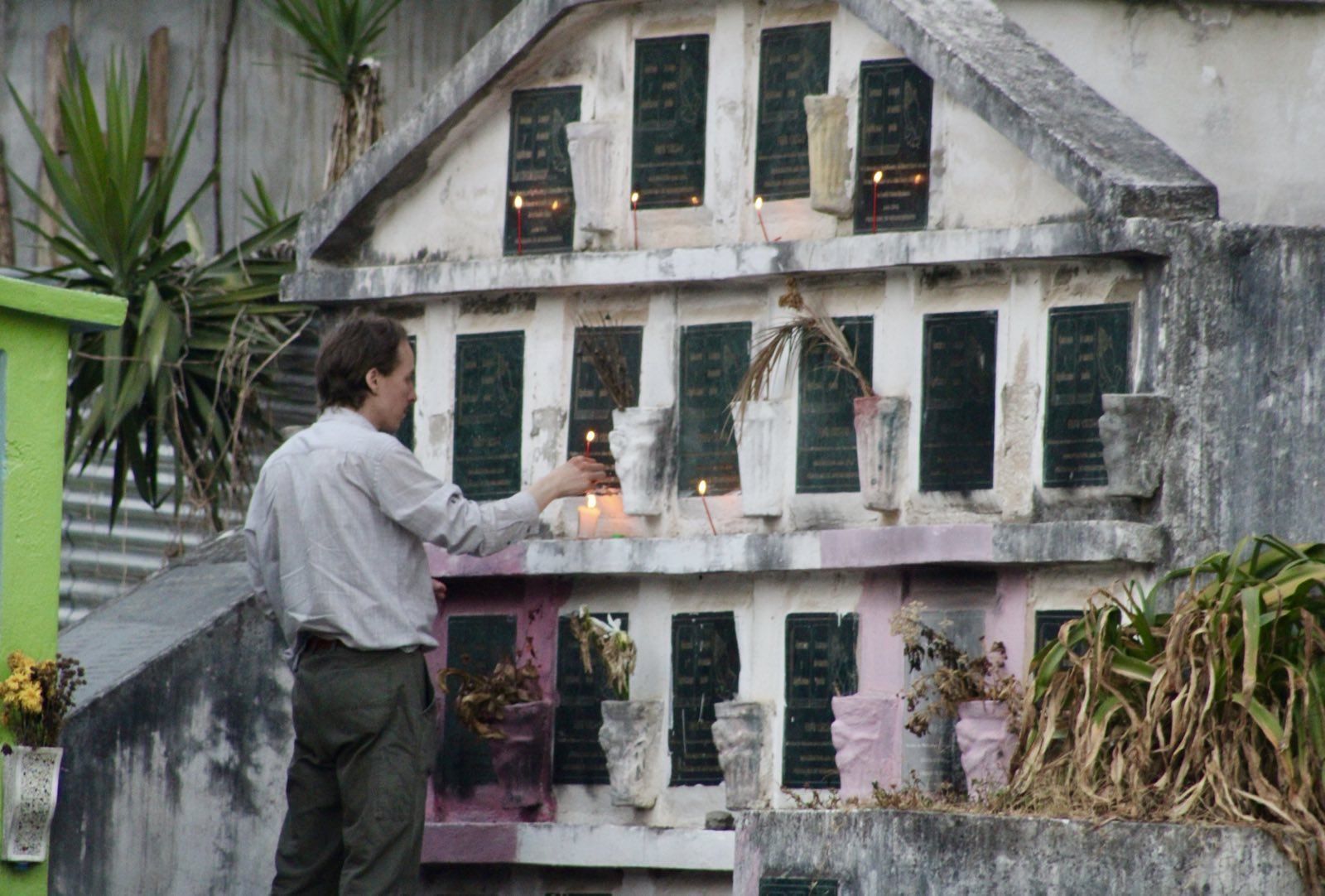
One of the most important projects that the Ixil people pursue today, some 40 years on from the genocide, is maintaining the memory and demonstrating the reality of what occurred. This set of graves in Nebaj contains the remains of 25 still-unidentified victims of a massacre that occurred in 1982 in the village of Xecac, near Nebaj. The victims' remains were reinterred in the cemetery in July of 2014. There are perhaps a hundred other graves in the same cemetery containing identified and unidentified victims of other massacres perpetrated in the region. Photo by NISGUA, May 2025.
A Brief History of Ixil Repression
The following paragraph is heavily informed by Giovanni Batz’s The Fourth Invasion.
The Ixil people are understood to have diverged from the earlier pan-Mayan culture and continuously occupied the Ixil region of Guatemala for at least the past 1500 years. Since the Spanish invasion, the Ixil people have faced continually intensifying threats on their life and culture. By 1530, a majority of the Ixil people had been killed by the Spanish, and survivors were forced to adopt Spanish customs. Despite being forced to abandon their culture and religion, the Ixil retained a degree of autonomy and continued to work the land for themselves until the start of the 20th century. In 1902 large swaths of farmland actively tended by the Ixil were taken from them and given to rich European and Ladino families, and those same Ixil were then enslaved to farm these new fincas, essentially slave plantations. The oppression mounted further during the Internal Armed Conflict, reaching its apex in 1980-83, when the Guatemalan army pursued a campaign of genocide. At that time in Guatemala, “being visibly Ixil was a death sentence.” Survivors were forced to flee; those who remained in Guatemala had to give up all custom and language to survive. Since the peace accords of 1996, the physical displacement of the Ixil from the Ixil region, despite their subsequent return, has served as a pretext to strip them of formal recognition as an Indigenous people, meaning that they lack many basic rights other peoples in Guatemala enjoy. Today, the Ixil struggle to defend their land and territory from international mineral and hydroelectric interests that seek to once again displace and dehumanize them.
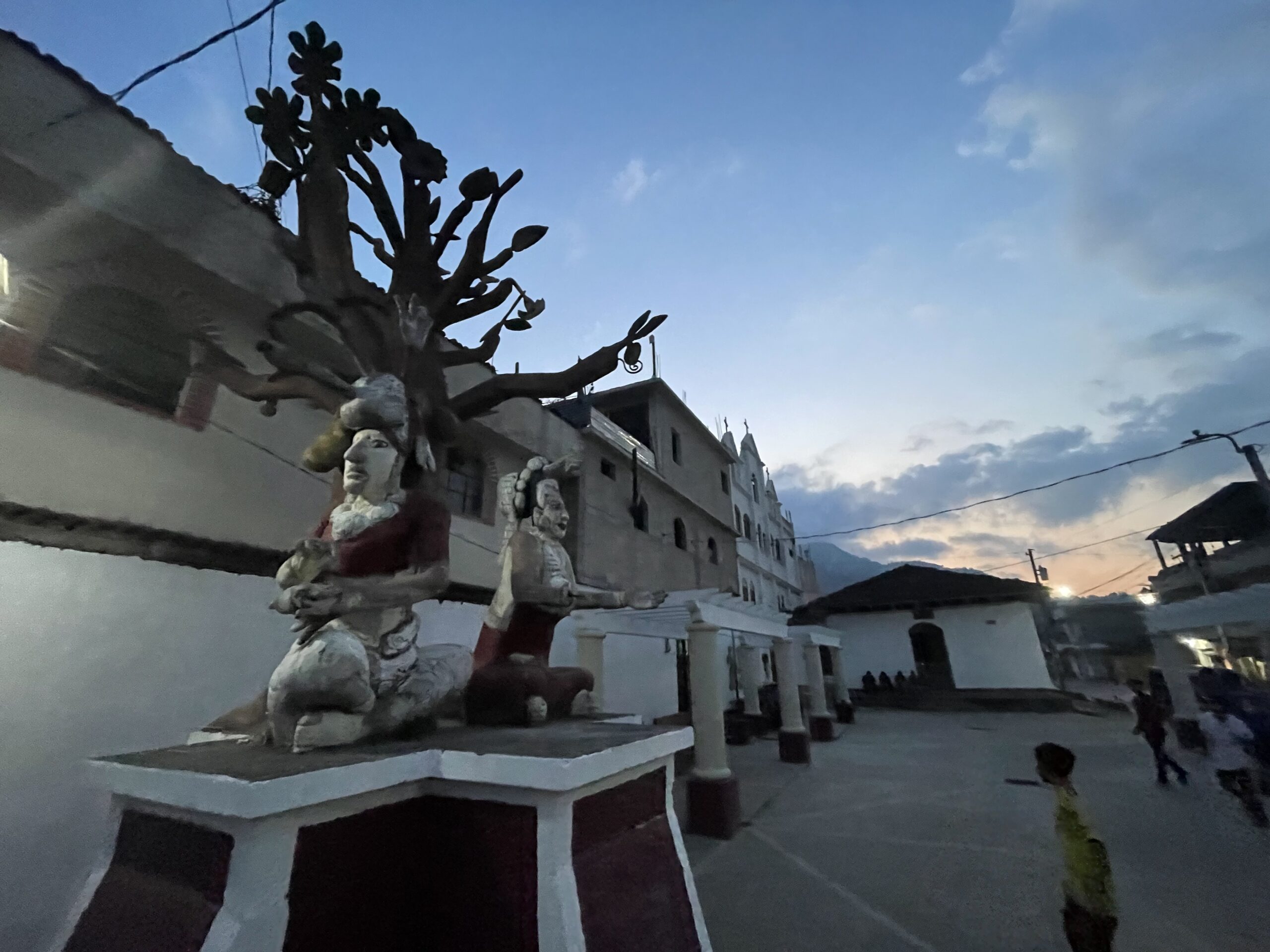
Of course, the Ixil people routinely rebelled against their enslavement, and met in response with overwhelming force. On 21/6/1936, Ixil in Nebaj, the largest municipality in the region, revolted due to explotation and forced labor. In response, the federal government sent in the military, arrested 150 people, and publicly executed 7 principales, or local leaders, in the town square shown here. The Ixil celebrate the anniversary of that event as Ixil Dignity Day. Photo by NISGUA, May 2025.
What is the significance of the sentence of genocide?
The genocide conviction had an impact that reverberated beyond Guatemala itself. As characterized in NISGUA’s earlier reporting, “The conviction was the first in the world to charge an ex-head of state for genocide in the national court system of the country in which the crimes took place.” For the Ixil people, the plain fact of the acknowledgement remains supremely important, with the hashtag #sihubogenocidio (“yes, there was a genocide”) being synonymous with the case and the ongoing struggle for justice. Furthermore, this initial legal acknowledgement is widely seen as the first step in other forms of compensation and reconciliation, which are still, haltingly, ongoing.
What obstacles do the Ixil people face today?
The original genocide sentence was almost immediately undermined by a corrupt federal judiciary, and the issue of judicial capture has only made the situation worse since 2013. Because of the way that federal judicial appointments function in Guatemala, buying a vote is simply a matter of having enough money to found a legal school. And that is to say nothing of the many less-than-legal forms of influence that plague the system.
In addition to this ongoing capture of the judiciary, the Attorney General’s office has also, in recent years, been weaponized against the Ixil. The current AG, Consuelo Porras, was appointed under a former president who openly collaborated with the military perpetrators of the genocide. Porras has done everything in her power to provide impunity for those who benefit from corruption, and to criminalize those who would fight for a more just system. In May, two indigenous leaders of a 106-day general strike–which was held from October 2023 to February 2024 and ensured the just transition of power to president Arévalo–were arrested at Porras’ behest and held on charges of terrorism related to the strike. It’s currently unclear whether those charges will stick, but the naked threat of retaliation against Indigenous-lead campaigns for justice was on everyone’s minds at the commemoration.
![A dozen seated and standing figures hold a press conference. People are dressed in a mix of casual clothing and tradition Ixil attire. Behind the figures is a banner depicting a mountain range, reading "Defender el Territorio es Nuestro Derecho" (Defending [our] territory is our right)](https://nisgua.org/wp-content/uploads/20250714_Ixil_Foto3-scaled.jpeg)
The Coordinating Committee of Ixil Organizations, giving a press conference on the morning of May 9th. Their full statement is available in English here. Note the geometric patterns on the women's shirts - these are distinctively Ixil in style. As a visible symbol of Ixil culture, they stand as a rebuke to the repression and violence the Ixil faced during the Internal Armed Conflict. Photo by NISGUA, May 2025.
We woke up early on the morning of the 9th and walked through the town square, around back of the whitewashed catholic church to an event space where the celebration was being held. Around two hundred Ixil people, from every corner of the region, speaking all three major dialects, met to acknowledge the historic achievement of the genocide conviction, honor the many community members who struggled for decades to achieve the sentence and who now seek reparation, and to receive news about the broader struggle from their Guatemala-City-based legal team. Many of the attendees, now in their old age, were victims of, and lost family members to, the atrocities committed in the Internal Armed Conflict. Many had testified in Ríos Montt’s trial, and continue to testify in others. It was a powerful event that demonstrated the strength of the Ixil community. The five hours of proceedings were bookended by a communal breakfast and lunch, and punctuated by a mid-morning snack, giving the people, who woke up early and traveled for hours to attend, time to catch up. Two different bands provided entertainment during the breaks. Every announcement was given in both Ixil and Spanish, and dozens of community members were acknowledged for some combined hundreds of years of service to the struggle for justice. In the words of the Ixil coordinating committee:
“The testimony of surviving family members … made clear … the horrific crimes committed during the Ríos Montt period. That is why the … courts convicted the general of genocide against the Maya Ixil people. This is how justice is done, thanks to the struggle of surviving relatives who bravely gave their testimonies and participated in the process, as well as to all the organizations that supported and accompanied us unconditionally so that these relatives could have access to justice and obtain the genocide conviction.”

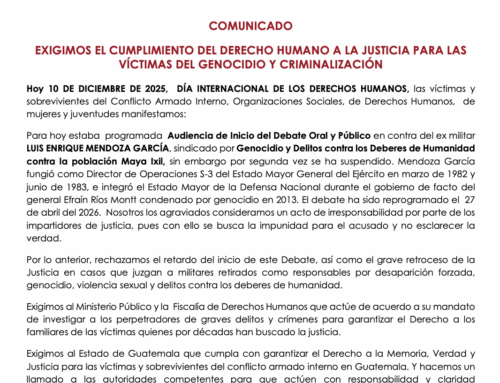
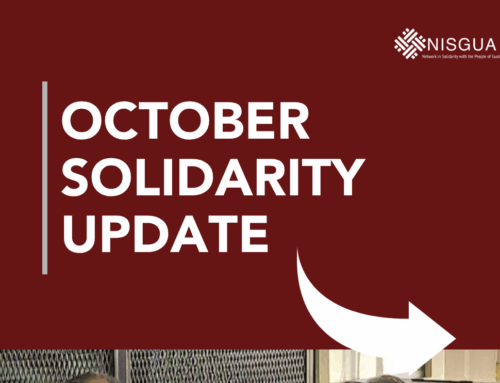
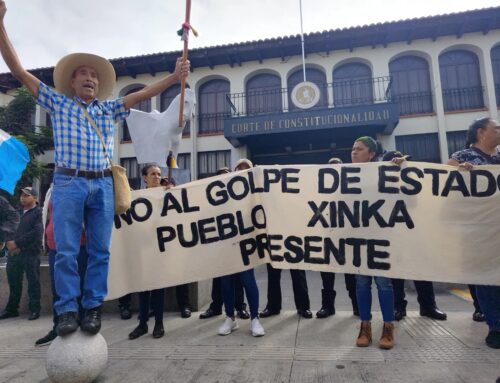
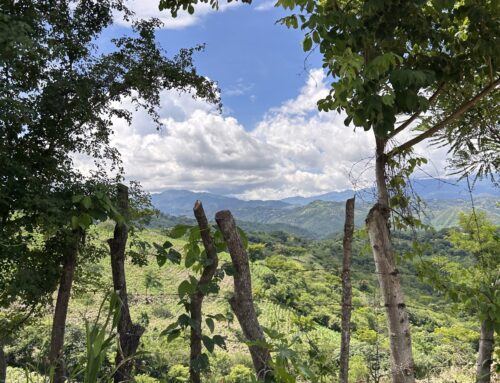
Leave A Comment